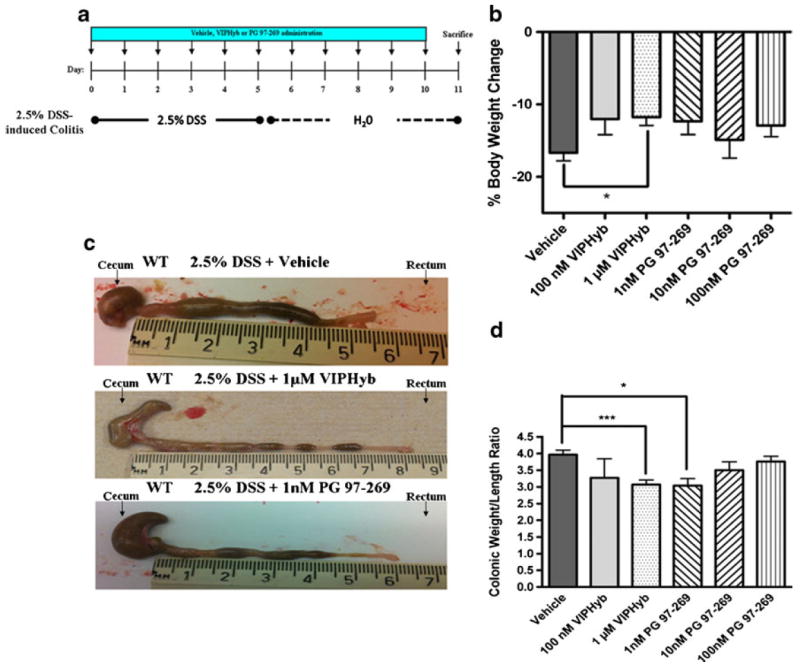Fig. 2.

a Diagram of the experimental protocol followed to study the effects of VIP antagonists, VIPHyb or PG 97–269, or vehicle, in DSStreated WT mice. b Percent of body weight change in mice treated with DSS and daily ip injections with vehicle (saline), or 100 nM VIPHyb, or 1 μM VIPHyb, or 1 nM PG 97–269, or 10 nM PG 97–269, or 100 nM PG 97–269. Significant resistance to colitis was documented by assessing percentage of body weight loss in mice injected with 1 μM VIPHyb compared to vehicle (p<0.01). Data expressed as mean±SEM. c Photographs of large intestine oriented from cecum to rectum. WT mice treated with DSS and vehicle (top panel), WT treated with DSS and 1 μM VIPHyb (second from top panel), WT treated with DSS and 1 nM PG 97–269 (bottom panel). d Colonic weight/length ratio in DSS-treated WT mice injected with vehicle, or 100 nM VIPHyb, or 1 μM VIPHyb, or 1 nM PG 97–269, or 10 nM PG 97–269, or 100 nM PG 97–269. Significant resistance to colitis, assessing colonic weight/length ratio was observed in 1 μM VIPHyb- and 1 nM PG 97–269-treated WT (p<0.001). Data are expressed as mean±SEM. Statistical analysis was performed using one-way ANOVAwith Bonferroni post-test to calculate the p values. *p<0.05, **p<0.01, ***p<0.001
